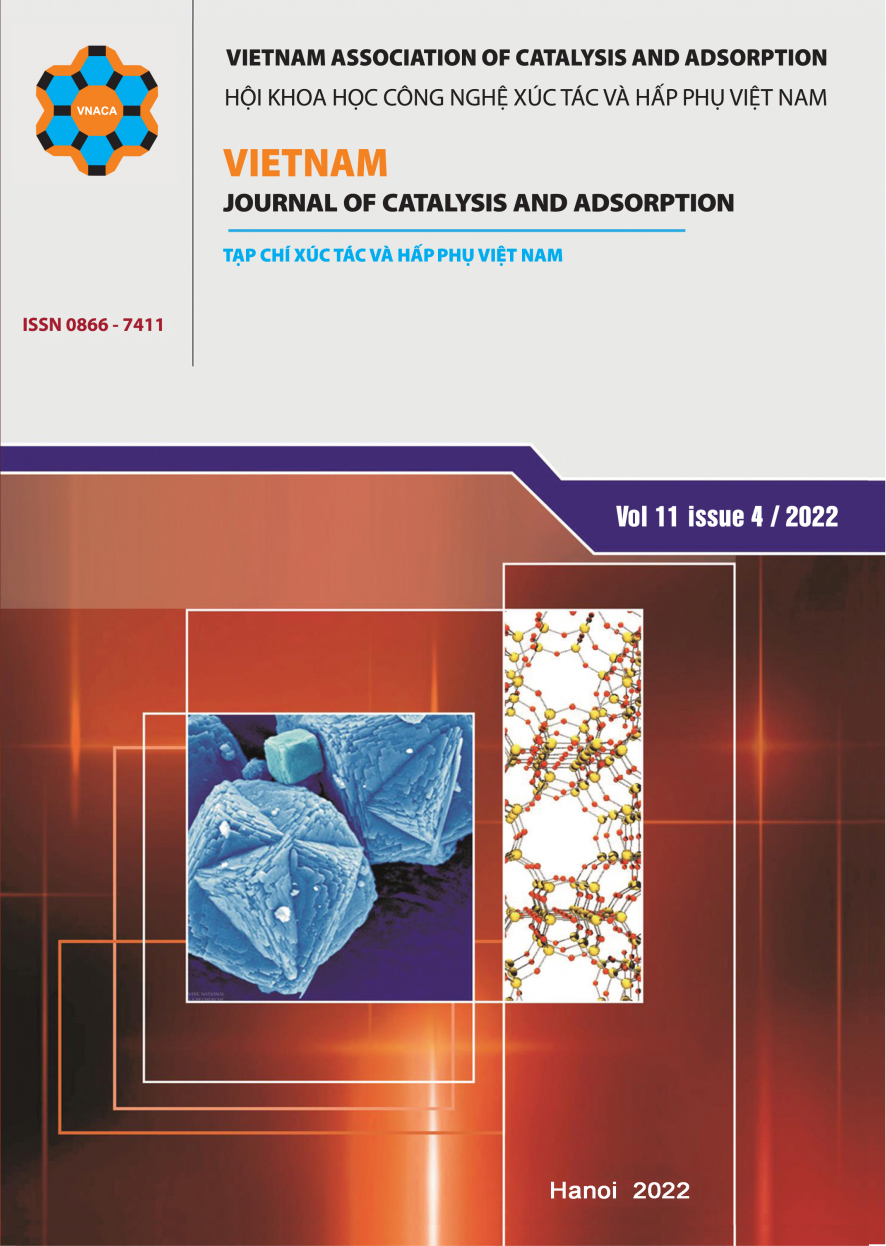Study the effects of P2O5 mineralization additives on cement clinker quality at low calcination temperature 1300oC and 1400oC
DOI:
https://doi.org/10.51316/jca.2022.079Keywords:
P2O5 mineralizing additives, strengh of cement, clinker cement, portland cementAbstract
In this study, the cement clinker was mixed with P2O5 mineralization additives with the rate of 1.0% and 2.0% (compared to the content of cement clinker without P2O5 mineralization additives which was called the control sample) and then this mixture was calcined at temperatures of 1300oC and 1400oC by gas furnace. The mechanical properties of the prepared cement samples were determined: density and free lime content of clinker; normal consistency and setting time of cement paste; soundness and compressive strength of hardened cement paste. The results showed that, the cement samples mixed with P2O5 mineralization additives had free lime content (1.36-1.91%) which was lower than the control sample (1.39-2.34%). The setting time significantly reduced compared with that of the control sample. The soundness of cement samples mixed with P2O5 reache 0.55-1.2 mm in accordance with TCVN 4031:1985 and it was smaller than that of the control sample. The compressive strength of hardened cement paste sample which mixed with P2O5 of 1.0% (at the age of 28 days) reached 25.23 N/mm2 at 1300oC (the control sample reached 24.32 N/mm2) and reached 28.6 N/mm2 at 1400oC (the control sample reached 27.00 N/mm2). The study showed that, The using of P2O5 mineralization additives with appropriate content will bring to the improved quality of the cement clinker.
Downloads
References
Bhatty, Javed I.; Miller, F.MacGregor; and Kosmatka, Steven H.. Innovations in portland cement manufacturing, by Portland Cement Association in Skokie (2004).
I. A kin Altun. Cement and concrete research, 29(11) (1999) 1847-1850.
F.Puertas, M.T. Blanco-Varela, T. Vázquez, A.Palomo. Cement and concrete research, 26(9) (1996) 1361-1367.
Tomáš Ifka, Martin Palou, Jan Baraček, František Šoukal, Martin Boháč, Cement and concrete research, 59 (2014) 147-154.
R. W. Nurse, Journal of Applied Chemistry, 2(12) (1952) 708-716.
Woo-Teck Kwon, Young-Hee Kim, Yong-Sik Chu, Jong-Kyu Lee, In-Seob Kim and Soo-Ryong Kim, Advances in Technology of Materials and Materials Processing, 7(1) (2005) 63-66.
Mai Văn Thanh. Luận án tiến sỹ kỹ thuật – nghiên cứu xi măng bền sun phát cao chứa bari, Trường Đại học Bách khoa Hà Nội (2001).
Nguyễn Đăng Hùng. Lò Silicat, Trường Đại học Bách khoa Hà Nội (1991).
Vũ Đình Đấu, Bùi Danh Đại. Chất kết dính vô cơ, NXB Xây Dựng Hà Nội (2006).
Bùi Văn Chén. Kỹ thuật sản xuất xi măng poóc lăng và các hất kết dính, Khoa đại học tại chức trường Đại học Bách khoa Hà Nội (1985).










